Kolonelleitnant Eduards Graudinsi imepärane pääsemine mahalaskmise eest
1944. aasta novembris mõistis Saksa okupatsioonivõimude sõjakohus 8 kindral Kureli rühma staabiohvitseri süüdi, kolm staabiohvitseri said erinevatel põhjustel armu. Kolonelleitnant suutis põgeneda mahalaskmise eest, kuid Graudiņš "trambiti" Saksa koonduslaagrisüsteemis
Ööl vastu 19.-20. novembrit 1944 toimus Liepaja Karosta vanglas Saksa okupatsioonivõimude sõjakohus, mis mõistis surma kaheksa kindral Kurelisi staabiohvitseri, kolm staabiohvitseri said erinevatel põhjustel armu.
Kolonelleitnant Eduard Graudins oli abielus saksa-valge naisega ja neil oli kaks last, poeg ja tütar. 1920. aastate lõpus lahutas ta ja tema endine naine koos kahe lapsega emigreerus 1939. aastal Saksamaale. Poeg võeti Saksa relvajõududesse ja teenis eliitdiviisis "Grossdeutschland". Ta hukkus 1944. aasta hilissuvel. Kui toimus kohtuprotsess, kirjutas endine abikaasa armuandmispalve oma poja teenistuse tõttu. Eduard Graudins saadeti Stutthofi koonduslaagrisse ja suri veebruaris 1945, kui see evakueeriti.
GRAUDINS EDUARDS poeg Peter
Iseseisvusekompanii kapten. Läti Rüütlirüütliristi ordu kavaler LKOKi rüütliristi rüütliristi rüütliristi rüütliristi rüütliristi rüütliristi rüütliristi rüütliristi rüütliristi rüütliristi rüütliristi rüütliristi rüütliristi rüütliristi kavaler
1921. aastal välja antud Läti teenetemärgi Läti leegioni orden
Teie kommentaarid
Tänan teid teabe eest. Selle teabe koostasid ajaloolased, võib-olla oli neil käsutuses dokumente, mis kinnitavad tekstis kirjutatut.
Seotud ajajoon
Seotud objektid
Koht, kus kindral Kurelisi staabiohvitsere lasti maha
1944. aasta juuli lõpus, kui Punaarmee tungis Läti territooriumile, lubasid Saksa okupatsioonivõimud Riia ringkonnapolitsei ülemal ja taastatud Läti kaardiväeorganisatsiooni 5. Riia kaardiväerügemendi komandöril Jānis Veidelisel luua "Riia kaardiväerügemendi kindral Kurelise rühma". Selle juhiks sai Läti Kesknõukogu sõjalise komisjoni juht, Läti armee kindral Jānis Kurelis.
Kurelis tegutses Vidzemes kuni 1944. aasta septembrini, mil ta kolis Kurzemesse, kus ta oli paigutatud Puzese valla Stiklis, Usma valla Ilziķi, Ģibuli valla Iliņi ning Põhja-Kurzeme Edole ja muudes kohtades. 1944. aasta oktoobri lõpuks oli Kurelies umbes 3000 relvastatud meest, nende hulgas palju endisi Läti SS vabatahtliku leegioni üksuste sõdureid, kes liitusid üksusega, et teostada oma unistust - võitlust Läti iseseisvuse eest.
1944. aasta novembri alguses hakkasid Saksa okupatsioonivõimude ülempolitsei ja SS-i ülemjuhataja Ida-Virumaal SS Oberruppenführer Friedrich Jeckeln piirama rühmituse tegevust ning 14. novembril arreteeriti Kureliesi peakorter ja üle 700 sõduri Stikliais, Puse vallas. Pataljon, mida juhtis leitnant Robert Rubens, umbes 500 mehega Usma piirkonnas, pidas vastu ja jätkas võitlust kuni 1944. aasta detsembrini.
Ööl vastu 19/20/1944 võitlesid sakslased sakslaste vastu. 19. novembril 1944 toimus Liepāja Karaostase vanglas Saksa okupatsioonivõimude sõjakohus, mis mõistis surma kaheksa kindral Kurelisi rühma staabiohvitseri - kolonel Pēteris Liepiņši, kapten Kristaps Upelnieks, kapten Jūlijs Mucenieks, leitnant Jānis Gregoras, leitnant Teodorma Prikulis, leitnant Jānis Rasas, leitnant Filipson ja adjutant Kārlis Valters. Kolm staabiohvitseri, kolonelleitnant Eduards Graudins, leitnant Arthurs Ankravs ja seersant Vili Pavulāns said erinevatel põhjustel armu. 20. novembri pärastlõunal lasti süüdimõistetud Karosta vangla lähedal olevates luidetes maha, kus täna on näha valge rist.
1994. aastal püstitati Liepaja Karosta luidetel mälestusmärk maha lastud ohvitseridele. 2012. aastal, pärast seda, kui see oli merre uhutud, taastati mälestusmärk oma praegusesse asukohta.
*** Translated with www.DeepL.com/Translator (free version) ***
*** Translated with www.DeepL.com/Translator (free version) ***
Kureellaste peakorter Stikloses
Stikli linnas asuv Annahiidi jahimaja oli kurelaste peakorter Teise maailmasõja ajal 29. oktoobrist kuni 14. novembrini 1944. See hoone on säilinud tänapäevani.
Stikli ümbrus on rikas mitte ainult soode ja metsade, vaid ka liiva poolest. 1897. aastal alustas tegevust uus Annahiidi klaasivabrik – nii sai see Läti asula oma nime Stikli. 1900. aastal ehitati otse Stikli järve kaldale nn Annahiidi jahiloss ehk hoone, kus elas tehase juhataja.
Rubeņši pataljoni lahingute toimumiskoht 6.–9. detsembril 1944
Mälestuspaik leitnant R. Rubenise pataljoni lahingute toimumiskohas 6.–9. detsembril 1944 Ugāle kihelkonnas "Vēverise" ja "Dzilnsi" majade vahel.
"Piiri" majad Skrīveri vallas
Skrīveri kihelkonnas asuvas "Piiri" majas alustati 28. juulil 1944 kindral J. Kurelise grupi moodustamist.
Kurelaste mälestuskivi Skrīveri kihelkonnas
Kureli rahva mälestuskivi Skrīveri kihelkonnas "Piiride" maja lähedal, avati 2015. aastal.
Strazde mõis
Strazde mõis asub Riia-Ventspilsi maantee ääres ja oli 29. septembrist kuni 28. oktoobrini 1944 kindral Jānis Kurelise grupi staap. Mõisahoonetes paiknes kolonelleitnant Eduards Graudiņši juhitud Skrīveri pataljon. Kurelised olid 1944. aasta suvel Vidzemē Riia ringkonna kaardiväest moodustatud sõjaväeüksus, mille eesmärk oli taastada Läti iseseisvus Saksa armee taandumise ja NSV Liidu vägede rünnaku vahel Läti territooriumile.
Kooli vajadusteks (alates 1922. aastast) ulatuslikult ümber ehitatud mõis on rekonstrueerimise käigus kaotanud oma algse ilme ja proportsioonid. Strazde mõisa ümbritseb kaunis park.
Jekelni peakorter Talsis
Selles Talsi hoones pidasid kindral J. Kurelis ja kapten K. Upelnieks 3. novembril 1944 läbirääkimisi SS Obergruppeführer F. Jekelni ja teiste Saksa ohvitseridega. Ajalooline hoone on lammutatud ja selle asemele ehitatakse uus hoone.
Endine poe/politseihoone
Endine poe/politseihoone Talsis, Kr.Valdemāra 2, kus kindral J. Kurelise grupi staabiohvitserid olid vangistatud 14.–19. novembrini 1944.
Stiklose kurelaste mälestuskivi
Kurelaste mälestuskivi Annahiidi jahimaja "Stiklos" lähedal Puze kihelkonnas, avastatud 1997. aastal, ümber paigutatud 2023. aastal.
Kivi lähedal asub QR-koodiga infotahvel, kus audiogiid jutustab kurelaste loo.
Mälestuspaik vanal Annahite kalmistul
Mälestuspaik vanal Annahiidi kalmistul, kuhu on maetud 14. novembril 1944 kindral J. Kurelise grupi peakorteri ja peavägede piiramise tagajärjel langenud sõdurid ja tsiviilisikud.
Mälestusmärgid kindral J. Kurelise rühmale ja leitnant R. Rubenisele "Dzelzkalni" kalmistul
Mälestuskivid kindral J. Kurelise ja leitnant R. Rubenise grupile Dzelzkalni kalmistul Puze kihelkonnas. Avati 1997. aastal.
Mälestusmärgid paigaldati juba enne Rubenise pataljoni muuseumi asutamist.
Õnnetuse sündmuskoht Renda vallas Chubu majade lähedal
"Chubu" majad asuvad Ozoli põhja pool Renda kihelkonnas. Kokkupõrge sakslastega leitnant L. Znutēnsi juhitud 2. kompanii (leitnant V. Strautnieksi pataljon) Chubu majade lähedal toimus 16. novembril 1944.
Valge Rist ja hukkamispaik Karostas
Valge Rist ja hukkamispaik Liepāja Karosta vangla vastas. Avati 2000. aastal.
Leitnant R. Rubenise pataljoni mahalastud sõdurite mälestusmärk
Rubenise pataljoni sõdurite kalmistu asub Kuldīga - Sabile maantee ääres, Renda doktoritöö endise asukoha vastas. Tee ääres on viit ja mälestuskivi asub teest vaid mõnesaja meetri kaugusel.
Leitnant Roberts Rubenise pataljon oli üks kindral Jānis Kurelise moodustatud väeosa osadest, mis ei alistunud Saksa vägedele ja osutas ägedat Saksa vastupanu. Usma perioodil suurenes pataljoni arvuline koosseis 650 meheni, koos nelja täielikult varustatud kompanii, kiirabi ja farmimeeskonnaga. Juhtkond: leitnant R. Rubenis, leitnant Filipsons, reamees A. Druviņš, reamees Šulcs, reamees Briedis, reameesseersant J. Rubenis, reamees J. Bergs, reamees Jaunzems.
14. novembrist kuni 9. detsembrini 1944 toimusid Ugāle, Usma, Renda ja Zlēki kihelkondades ägedad lahingud politseikindral Friedrich Jekelni juhitud Saksa 16. armee, SD ja SS üksuste ning leitnant Roberts Rubenise juhitud Kureli üksuse eraldi pataljoni vahel. Renda ja Zlēki lähedal toimunud lahingutes hävitati umbes 250 Saksa sõdurit, rubenlased aga umbes 50 kaotust.
Pärast leitnant Rubenise surma teatas Druvinš oma meestele, et tegutseb edaspidi vabatahtlikkuse alusel ja selle tulemusel otsustasid mitukümmend meest Rubenise pataljonist lahkulöömise teel lahku lüüa. 20.-21. novembril 1944 võttis Saksa SD üksus vangi 11-liikmelise grupi, kes pärast ülekuulamist viidi kohalikku metsa ja lasti maha.
Rubeņši pataljoni lahingute toimumiskoht 18. novembril 1944
Mälestuspaik leitnant R. Rubenise pataljoni lahingute toimumiskohas 18. novembril 1944 Renda vallas "Pērkonase" ja "Mežzīļi" majade vahel.






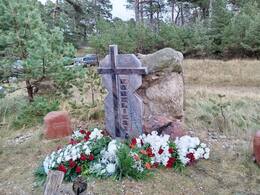

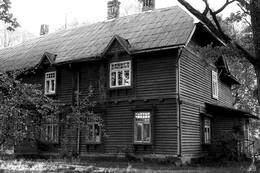
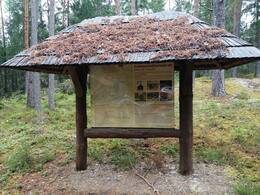
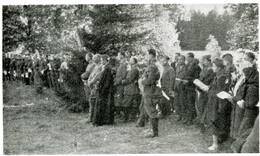
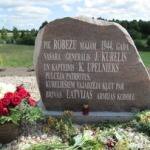
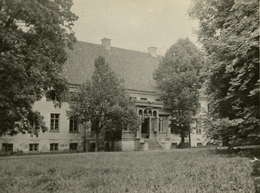
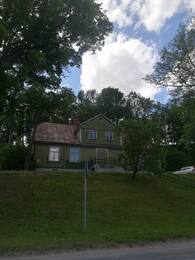

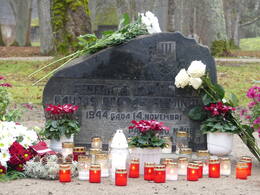
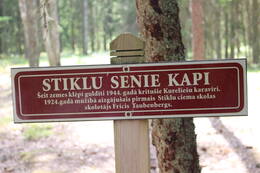
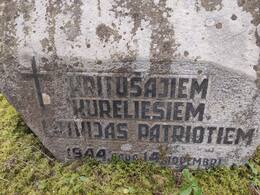
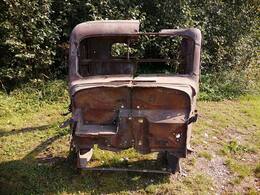
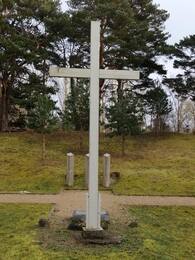
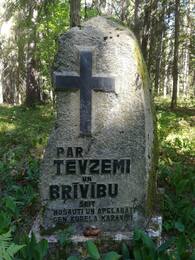
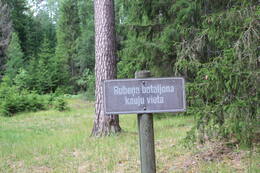
Osa sellest on müüt. Olen Eduardi lapselaps tema teisest abielust. Tema esimesel naisel oli kaks tütart ja poeg, kes hukkusid Saksa tankidiviisis, ta oli siis umbes 17-aastane. Tema esimene naine ei oleks kuidagi kuulnud sõjakohtust, rääkimata kohalviibimisest või kirja saatmisest, nagu ta oli Poolas. "Sõjakohus" (mis oli ilmselgelt ebaseaduslik, kuna kurelased ei kuulunud Saksa armeesse) oli varitsus. Ta arreteeriti "koosolekul" ja tema üle mõisteti järgmisel päeval hukka. Meil on kirjad, mille ta kirjutas vanglast enne ja pärast "kohtuprotsessi". Tal oli 3 last oma teise naisega, kes viibis kohtuprotsessi ajal Talsi lähedal, järgnes Stutthofi, kuid ei saanud temaga seal ühendust. Ta rändas Austraaliasse. Tema esimese naise perekond rändas Ameerikasse. Me ei tea, miks teda kohtuistungil maha ei lastud, aga kirja polnud.